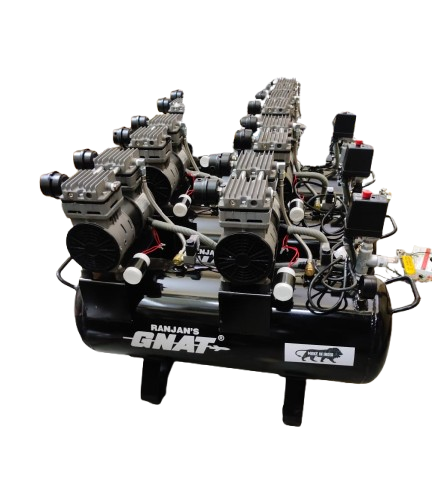
Difference Between Lubricated and Oil-Free Air Compressors
Share
Understanding the Two Types of Air Compressors
When buying an air compressor, one of the first choices you’ll have to make is between lubricated and oil-free models. Both do the same basic job — compress air — but they’re built for different kinds of work.
Lubricated Air Compressors
These compressors use oil to lubricate their moving parts, keeping them cool and running smoothly.
Key Features:
- Built for long hours and heavy-duty use
- Ideal for factories, workshops, garages, and construction sites
- Runs quietly and lasts longer due to better lubrication
- Needs regular oil changes and maintenance
- Strong performance for industrial work
Best For:
Manufacturing, automotive, drilling, painting, and other industries where clean air is not a strict requirement.
Oil-Free Air Compressors
Oil-free compressors don’t use oil inside the compression chamber. Instead, they have special coatings or materials that allow parts to move smoothly without lubrication.
Key Features:
- Provides clean, oil-free air
- Requires very little maintenance
- Light and portable
- Ideal for jobs that need clean air output
Best For:
Dental clinics, hospitals, food packaging, electronics, and painting work where even a small trace of oil can cause problems.
Quick Comparison
| Feature | Lubricated | Oil-Free |
|---|---|---|
| Maintenance | Regular oil checks | Minimal |
| Air Quality | May contain oil particles | 100% oil-free |
| Durability | Longer life | Slightly shorter |
| Use Type | Heavy-duty | Light to medium |
| Ideal For | Industrial, mechanical work | Clean air industries |
✅ Conclusion
If you need a compressor for continuous, heavy use, go for a lubricated model. If you work in medical, food, or precision industries, choose an oil-free compressor.
At GNAT, both models are by a 1-year warranty with full after-sales support.
